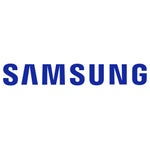News
Apple Foldable iPad Delayed to 2028? Gurman vs. Pu on 20-Inch Screen Timeline
Apple Foldable iPad Delayed to 2028? Gurman vs. Pu on 20-Inch Screen Timeline
Apple’s highly anticipated foldable iPad is facing delays, and experts are divided on the timeline and specifications. Mark Gurman from Bloomberg predicts a 2028 launch with a 20-inch screen, while Jeff Pu, a respected analyst, suggests a delay to 2027 and a smaller 18.8-inch display. What’s causing the confusion, and why is the device’s release being pushed back?
In this article, we break down what’s behind the delay, why screen size is causing debate, and how Apple’s upcoming foldable device compares to Samsung and Huawei’s offerings in the foldable market.
Why the Apple Foldable iPad Is Delayed: Insights from Jeff Pu
Jeff Pu reports that Apple’s foldable iPad, initially expected in 2027, will likely now be delayed to 2028. According to Pu, engineering challenges with the foldable display and supply chain issues are the main reasons behind the delay.
Apple’s foldable technology has to meet high standards for durability, and the flexible display must be built to last. Corning and Dupont are working on special materials to ensure the screen remains reliable and robust, but these innovations are taking longer than expected. Additionally, global chip shortages have made it harder for Apple to secure the necessary parts, further pushing back the launch. For more information on Apple's supply chain challenges, check out this article on Bloomberg about how global issues are affecting tech giants.
20 Inches vs. 18.8 Inches: Which Screen Size Will the iPad Have?
One of the most debated aspects of the foldable iPad is its screen size. Mark Gurman says that Apple is considering a 20-inch display, which would provide a larger screen than traditional tablets and more closely resemble a laptop.
On the other hand, Jeff Pu reports that Apple is still leaning towards an 18.8-inch display for the device. This smaller size could make the iPad more portable but may sacrifice some of the productivity benefits that a larger screen could offer.
The screen size debate also ties into the question of device identity. If Apple goes with the 20-inch screen, it might blur the line between an iPad and a MacBook, forcing the company to decide between iPadOS and macOS. Each operating system offers different strengths, and Apple will need to choose one that aligns with the device’s intended use.
-
iPadOS is designed for tablet experiences, offering great multitasking features.
-
macOS, however, is optimized for laptop-level productivity, with powerful features suited for professional use.
Apple’s decision here is crucial: a larger screen may require a more robust operating system to maximize productivity.
The Engineering Hurdles Behind the Delay
Apple isn’t just facing production delays—there are serious engineering challenges in creating a foldable device that meets the company’s high standards. Samsung and Huawei have already launched foldable devices, but Apple’s focus on screen durability and design perfection has delayed its entry into the market.
Unlike other brands, Apple isn’t rushing to release a foldable device that might have issues like screen creases or shortened lifespans. Instead, it’s carefully testing new materials like flexible glass and ensuring the folding mechanism is both reliable and long-lasting.
Apple’s goal is to offer a premium foldable device that doesn’t compromise on quality. That means Apple is taking the time to perfect the materials and manufacturing processes, even if it means a later release.
Competitive Pressure from Samsung and Huawei
While Apple is still in the development phase, Samsung and Huawei have already established themselves as leaders in the foldable market. Samsung’s Galaxy Z Fold 6, with its 7.6-inch screen, and Huawei’s Mate X, have proven the viability of foldable devices and are already available to consumers.
Apple’s delay means it may be playing catch-up in a rapidly evolving market. If Apple opts for a 20-inch screen, it could target the laptop replacement market, but it will have to compete with not only Samsung’s foldable lineup but also newer devices like the HP Spectre Fold and Huawei’s foldable innovations.
Apple’s challenge will be to differentiate its foldable iPad from existing devices while ensuring that it provides unique value in terms of both design and user experience.
Conclusion: Apple’s Foldable iPad—A Work in Progress
The Apple foldable iPad is still in development, with Jeff Pu and Mark Gurman offering conflicting predictions about the screen size and release date. The engineering challenges, particularly with the foldable display and durability concerns, are likely the main reasons behind the delay.
With Samsung and Huawei leading the foldable market, Apple will need to carefully strategize to bring a device to market that’s both innovative and reliable. Whether Apple opts for a 20-inch screen or a smaller 18.8-inch one, the foldable iPad will need to stand out in a crowded market where productivity, portability, and durability are crucial.
As we await updates on Apple’s foldable technology, one thing is clear: the future of foldables will be shaped by innovation, engineering precision, and consumer demand.
Related Articles
- New iPads: Everything You Need to Know
- iPad (2025) Debuts with A16 Chip: Faster, Smarter & More Storage but without Apple Intelligence
- Apple's Foldable Phone Set to Launch in Late 2026
FAQs: Apple Foldable iPad Delay
1. Why has the Apple foldable iPad been delayed?
A: The delay is due to engineering challenges with foldable display technology and supply chain issues.
2. Will the foldable iPad have a 20-inch screen?
A: Mark Gurman suggests a 20-inch screen, while Jeff Pu reports it may be slightly smaller at 18.8 inches.
3. When is the Apple foldable iPad expected to launch?
A: The launch is now expected around 2028, according to recent reports.
4. How does the Apple foldable iPad compare to Samsung and Huawei?
A: Apple’s foldable iPad aims to offer a larger screen and premium features compared to Samsung’s and Huawei’s foldables.
5. What are the key challenges Apple is facing?
A: The challenges include durable foldable displays, flexible glass, and supply chain delays.












